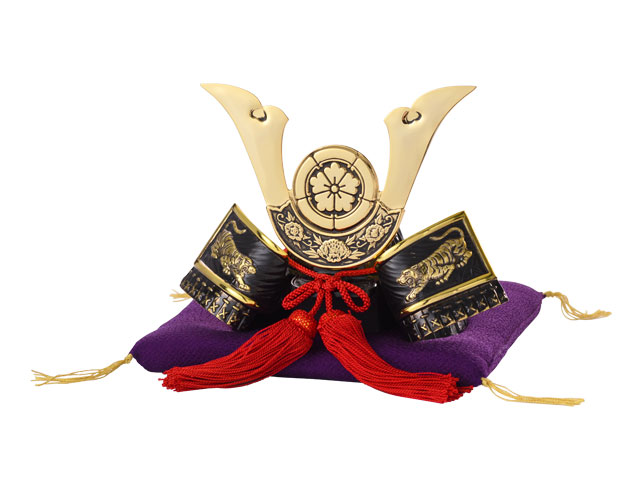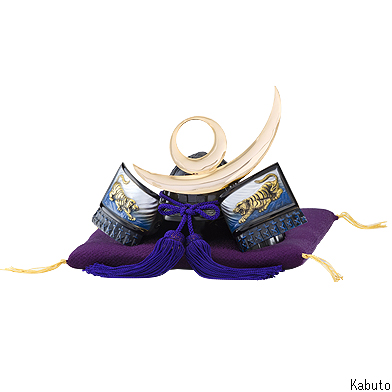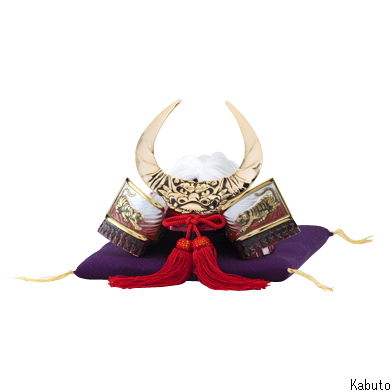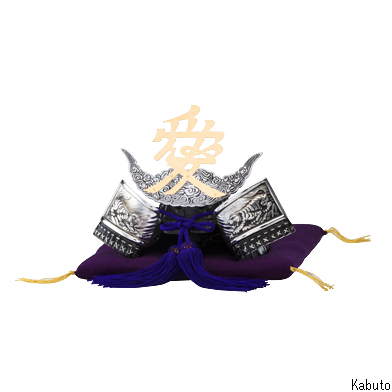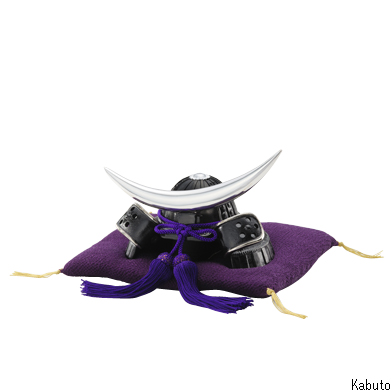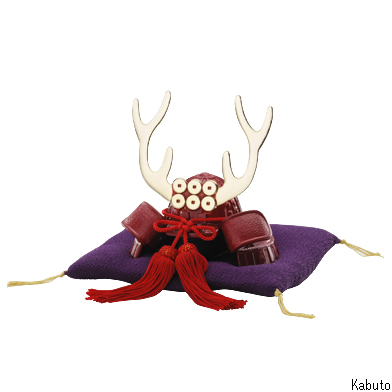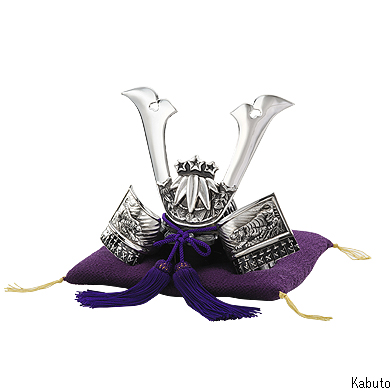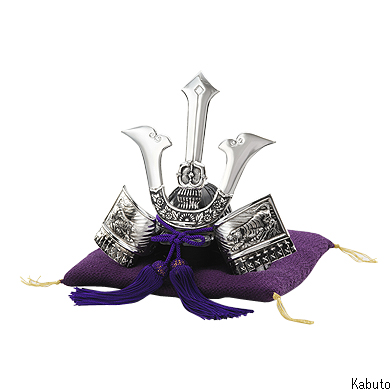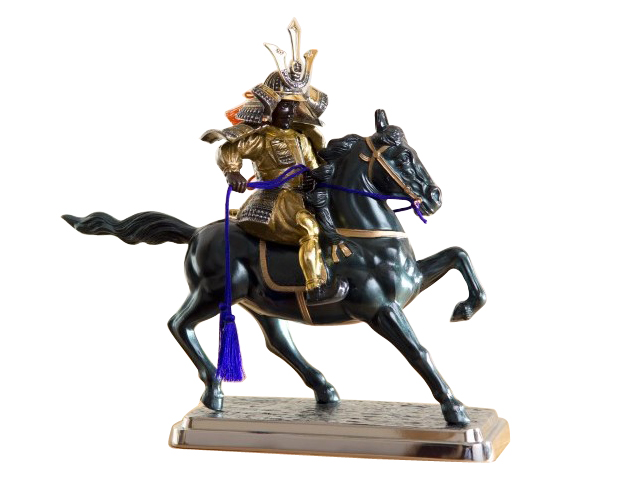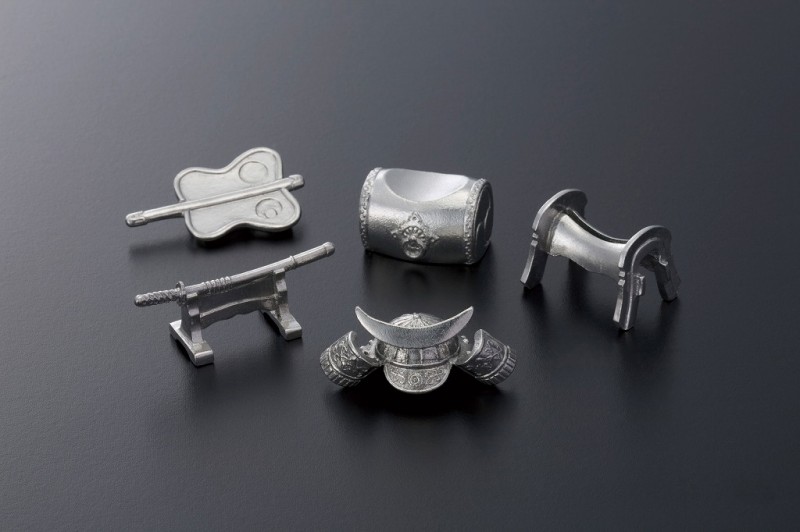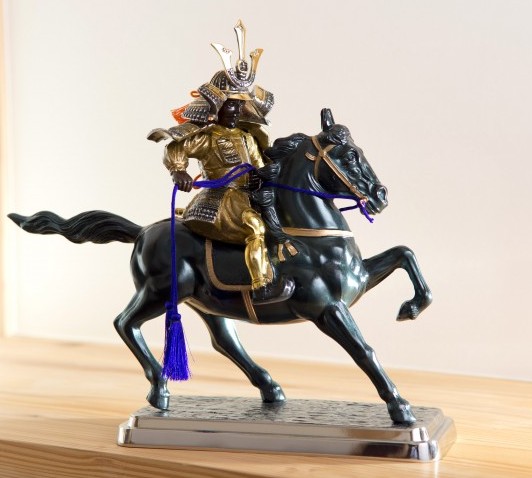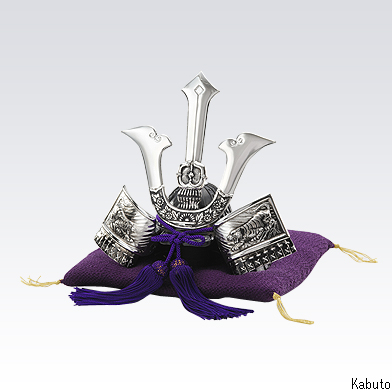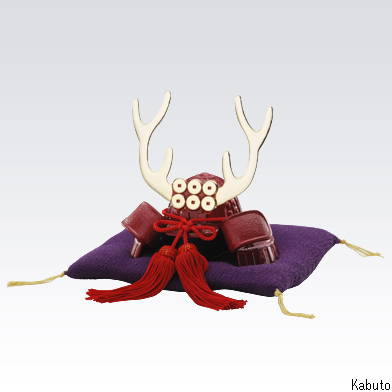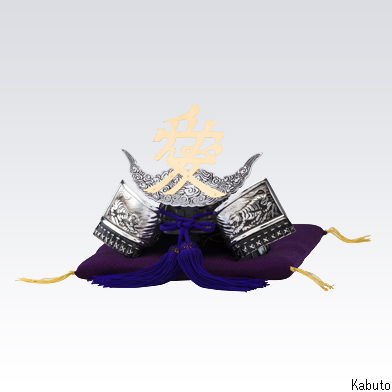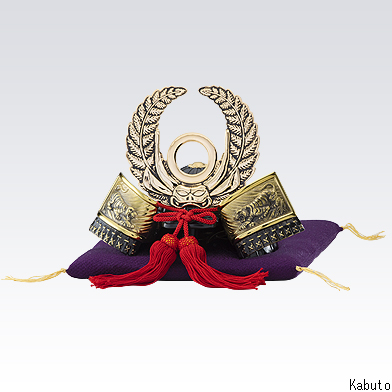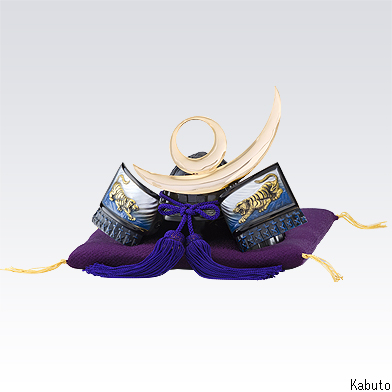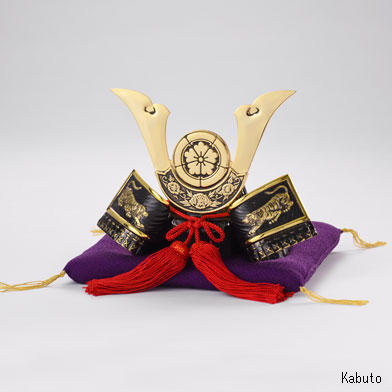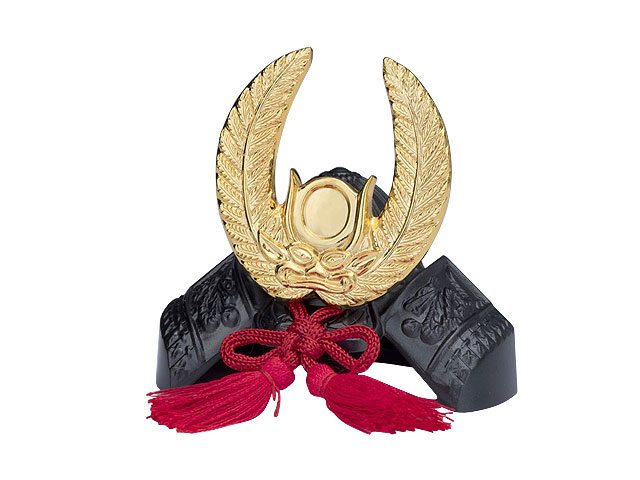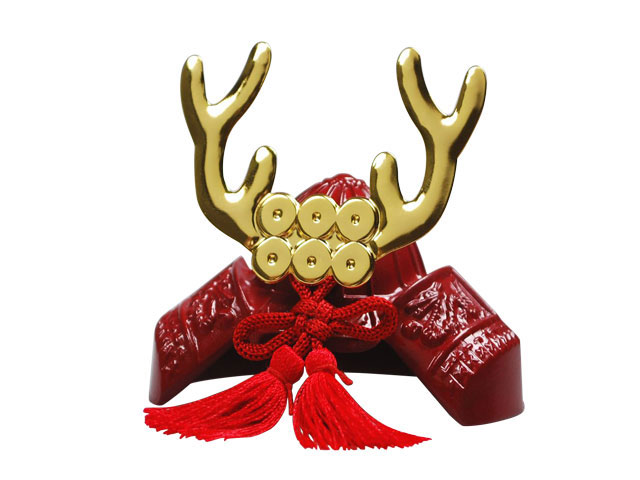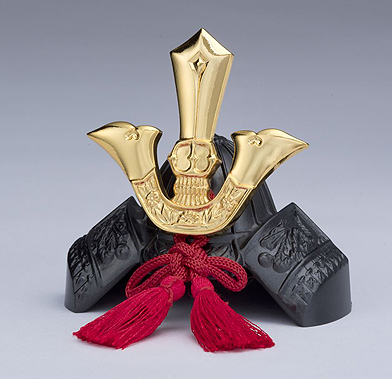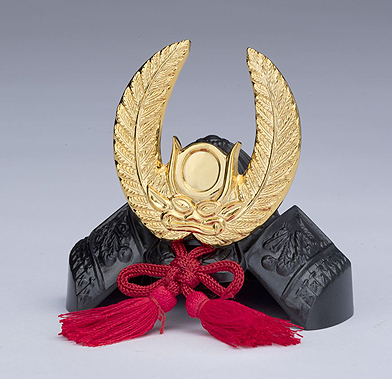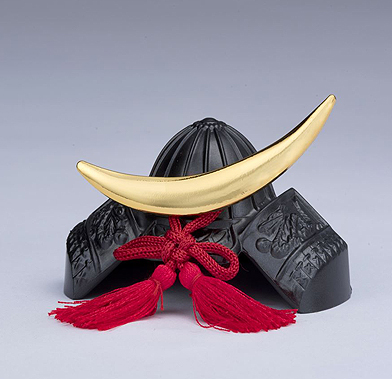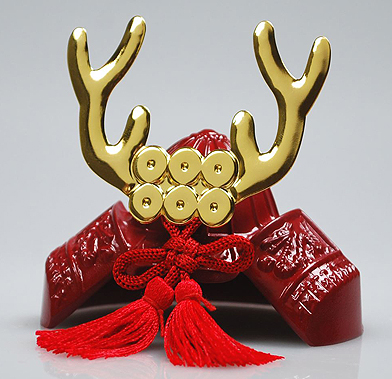Products - Art Division
Japanese Warrior (Samurai) Helmets
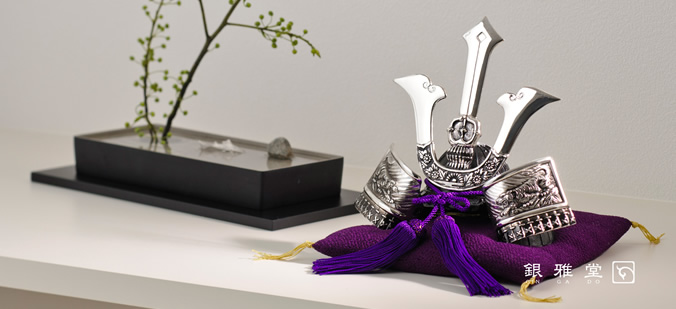
Samurai Helmets, Kabuto 兜
Click a photo in detail.
A set of Samurai Chopstick Rests/ Holders
A set of tin chopstick rests/ holders keep your chopsticks off of the table and makes your table setting look complete.
Helmet, sword, drum, saddle and gunbai (Japanese war fan) – those items have been a symbol of success and growth since ancient times because they were indispensable in battlefields.
Our casting technique can elaborately describe their details.
Spec:
Material: Tin
Size:
| Dim | Weight | |
| Helmet | H54xW48xD54 (mm) | 35g |
| Sword | H22xW60xD20 (mm) | 20g |
| Drum | H22xW33xD30 (mm) | 60g |
| Saddle | H25xW35xD30 (mm) | 25g |
| Fan | H13xW50xD30 (mm) | 30g |
Packing: paper gift box
Made in Takaoka-shi, Japan
| Item #> | |
| 5pcs | ging-051-SOJ |
| 2pcs (helmet and sword) | ging-052-SOJ |
Samurai on horse
This ornament describes a brave Samurai on a dashing horseback. Samurai is an elite class of warriors in Japan. Only selected samurai were allowed to ride horses in battle.
This bronze Samurai warrior statue is highly detailed. Metallic gloss finishing makes the swift horse and the rock-solid general vividly. The piece depicts a vigorous horse with long tail waving and head perking. The general’s body armour is elaborately made by assembling many pieces.
Two types available:
- Samurai on Horse – Date
Material: Bronze Alloy
Size: H32cm x W38cm
Weight: 3600g
- Samurai on Horse – Kusunoki
Material: Bronze Alloy
Size: H34cm x W38cm
Weight: 3800g
Samurai – Kuroda
Kuroda Kanbei (黒田 官兵衛 1546-1604)
He, also known as Kuroda Yoshitaka, was a 16 century samurai and military tactician. He helped Toyotomi Hideyoshi, the Japan's second 'great unifier', as a chief strategist and an adviser. He is famous for designing many castles, such as Fukuoka Castle, Osaka Castle, and Himeji Castle (National Treasure).
Frontal decoration, maedate, for his kabuto is 'Fujidomoe' that is the family crest for Kuroda Family.
NHK’s yearlong period drama (Taiga drama) in 2014 is titled "Gunshi Kanbei" and it depicts the life of Kuroda.
Spec:
Material: zinc alloy, brass
Size: H11 x W14cm
Made in Takaoka-shi, Japan
| Item #: | |
| Kabuto | ging-001-GBL |
| Kabuto in case | ging-036-GBL> |
| Kabuto on board | ging-046-GBL |
| Kabuto with folding screen | ging-041-GBL |
Samurai – Kusunoki
Kusunoki Masashige (楠木 正成, 1294-1336)
As a brilliant tactician and strategist, he was a 14th-century samurai who fought for Emperor Go-Daigo in his attempt to wrest the control of Japan from the Kamakura shogun, and later called a patriotic hero.
Frontal decoration, maedate, is a long sword and deer-shaped horns.
Spec:
Material: zinc alloy
Size: H18.5 x W19.5cm
Made in Takaoka-shi, Japan
| Item #: | |
| Kabuto | ging-003-GSV |
| Kabuto in case | ging-039-GSV |
| Kabuto on board | ging-048-GSV |
| Kabuto with folding screen | ging-044-GSV |
Samurai – Minamoto
Minamoto no Yoshitsune (源 義経, 1159-1189)
He was a 12-centruy samurai who is considered one of the greatest warriors of his era.He has long been a popular figure in Japanese literature and culture. His older brother Yoritomo founded the Kamakura shogunate.
Yoshitsune was often described as a precocious child. Legend has it that he defeated the warrior monk Benkei in a duel when he was 19. They met at a bridge in Kyoto, where Benkei disarmed every passing swordsman to collect 1000 swords. On his 1000th duel, Benkei was defeated by Yoshitsune.
As a genius tactician and brave leader, Yoshitsune had fought in the Genpei War against the Taira clan. He is credited with most of his clan’s successes against the Taira. However, his elder brother Yoritomo felt a twinge of jealousy and turned against him. He had to run away from his brother. In the end, he was encircled and committed seppuku.
Even though he passed away, there were many rumours and legends about his death. It is said that Yoshitsune faked his death and ran away to another part of Japan to be safe. Another legend says that he sailed to the continent of Asia and became Ghenghis Khan.
About his kabuto:
His frontal decoration, maedate, is big deer-shaped horns.
Spec:
Material: zinc alloy
Size: H15.5 x W19.5cm
Made in Takaoka-shi, Japan
| Item #: | |
| Kabuto | ging-004-GSV |
| Kabuto in case | ging-040-GSV |
| Kabuto on board | ging-049-GSV |
| Kabuto with folding screen | ging-045-GSV |
Samurai – Sanada
Sanada Yukimura (真田 幸村, 1567-1615)
He was a samurai of the Sengoku period. As one of the most distinguished warriors in the period, he has been called "a hero who may appear once in a hundred years". He was especially known to fight bravely as a leading general on the defending side of the decisive battle “the Siege of Osaka”. His clan has been called “crimson demons of war” because of their gallantry.
NHK 2016 Taiga drama is tittled "Sanadamaru" and Sanada is the lead role.
About his kabuto:
His kabuto is red with deer-shaped horns and "six coins (roku mon)". It is believed that the amount of money, "roku mon", is a fare for ferry to go across the river called ‘Sanzu no Kawa’, the Japanese Styx (in Greek mythology, the river called Styx forms the boundary between Earth and the Underworld). Many Japanese used to keep "roku mon" under their pillow, just in case they died overnight and needed it. Sanada chose "six coins" for the front decoration to describe his resignation of die.
Spec:
Material: zinc alloy, brass
Size: H15.5 x W14cm
Made in Takaoka-shi, Japan
| Item #: | |
| Kabuto | ging-005-GRE |
| Kabuto in case | ging-037-GRE |
| Kabuto on board | ging-050-GRE |
| Kabuto with folding screen | ging-042-GRE |
Samurai – Date
Date Masamune (伊達 政宗, 1567-1636)
He was a samurai warlord of the Sengoku period who ruled the Tohoku region (Northern Japan), and known as 'the Dokugan Ryu (One-eyed Dragon).' As his nickname suggests, he had developed a fearsome reputation through many battles. On the other hand, he had many hobbies and was a patron of arts. After he ruled the Tohoku region, he worked on many projects to beautify the region.
His kabuto is famous for the crescent moon.
Spec:
Material: zinc alloy, brass
Size: H12.0 x W19.5cm
Made in Takaoka-shi, Japan
| Item #: | |
| Kabuto | ging-007-GSV |
| Kabuto in case | ging-038-GSV |
| Kabuto on board | ging-047-GSV |
| Kabuto with folding screen | ging-043-GSV |
Samurai – Naoe
Spec:
Material: zinc alloy, brass
Size: H15.0 x W19.5cm
Made in Takaoka-shi, Japan
| Item #: | |
| Kabuto | ging-058-GSV |
| Kabuto in case | ging-063-GSV |
| Kabuto on board | ging-047-GSV |
| Kabuto with folding screen | ging-071-GSV |
Samurai – Takeda
Takeda Shingen (武田信玄 1521-1573)
He was the leader of the Takeda clan, which was called the most powerful clan in the Sengoku Period. Shingen is sometimes referred to as "The Tiger of Kai" for his martial prowess on the battlefield.
He fought many battles with his rival, Kenshin. Their main battllefield is Kawanakajima, and there are many anecdotes through the battles.
He is often being painted with a war fan. This is mostly taken from a story that supposedly took place during the fourth battle of Kawanakajima. Kenshin snuck into Shingen's camp to try to kill him, but Shingen deflected all his attacks with a fan.
Despite their rivalry, the two warlords respected for each other. When the surrounding lords refused to trade with Shingen because they feared him, Kenshin smuggled food to him. In return, Shingen gave Kenshin his sword which was one of his dearest possessions.
About his Kabuto:
The front of his kabuto is shishi, mythological Lion, and kabuto is covered with fur. The legend said he never lost his war when he wore the kabuto.
Spec:
Material: zinc alloy, brass
Size: H15.0 x W19.5cm
Made in Takaoka-shi, Japan
| Item #: | |
| Kabuto | ging-055-GRE |
| Kabuto in case | ging-060-GRE |
| Kabuto on board | ging-068-GRE |
| Kabuto with folding screen | ging-064-GRE |
Samurai – Tokugawa
Tokugawa Ieyasu (徳川 家康 1543-1616)
He was the third and final unifier of Japan and ended Sengoku Period. As the founder and the first Shogun of the Tokugawa, he brought three hundred years of peace and tranquility to war-torn Japan.
Ieyasu is perhaps best known for his patience. When he was a child, he was a hostage for the Imagawa Clan to stabilize his clan's survival. He learned to keep himself alive by supplication and keeping out of sight.
When compared to the other two unifiers, Oda Nobunaga and Toyotomi Hideyoshi, Ieyasu is generally described as “Slow and steady”. He looked at his surroundings carefully and never missed an opportunity.
About his Kabuto:
The front motif of his kabuto is fern. Since it is evergreen, the fern is regarded as symbol of longevity and prosperity.
Spec:
Material: zinc alloy, brass
Size: H15.0 x W19.5cm
Made in Takaoka-shi, Japan
| Item #: | |
| Kabuto | ging-057-GBL |
| Kabuto in case | ging-062-GBL |
| Kabuto on board | ging-070-GBL |
| Kabuto with folding screen | ging-066-GBL |
Samurai – Uesugi
Uesugi Keishin (上杉 謙信 1530-1578)
He was one of the most powerful lords of the Sengoku period. He was a devout Buddhist, praying to the Buddhist god of war,Bishamonten, most of the time. Combined with his prowess in the battlefield, he's also often regarded as an Avatar of the god of war. He is sometimes called “The Tiger of Echigo” because of his fearsome skills on the battlefields.
his rivalry with fellow warlord Takeda Shingen. The two reputedly clashed in the same battlefield of Kawanakajima five times, with no clear winner.
On the other hand, he is well-known for his noble behaviour.A famous anecdote is that when Shingen's other enemies cut off his salt supply, Kenshin provided him with salt, saying, "I do not fight with salt, but with the sword."
The front motif of his kabuto is the sun and the moon.
Spec:
Material: zinc alloy
Size: H14.0 x W19.5cm
Made in Takaoka-shi, Japan
| Item #: | |
| Kabuto | ging-056-GBL |
| Kabuto in case | ging-061-GBL |
| Kabuto on board | ging-069-GBL |
| Kabuto with folding screen | ging-065-GBL |
Samurai – Oda
Oda Nobunaga (織田 信長, 1534-1582)
He was a powerful daimyo during Japan’s Sengoku period. Known for his bold strategies and innovation, he revolutionized warfare by incorporating firearms and breaking traditional norms. He sought Japan’s unification, fostering trade, Christianity, and cultural growth. Betrayed by vassal in 1582, Nobunaga committed seppuku, but his legacy paved the way for Japan’s eventual unification under his successors.
ODA
Size: W19.5cm×D12.5cm×H14.5cm
Material: zinc alloy
Item #: ging-089-GBL
Made in Takaoka-shi, Japan
BUSHIDO- Small but Mighty Samurais
Even though they are palm-sized, the mini Samurai helmets are of an excellent standard in terms of their design and quality.
Click a photo in detail.
Samurai – Kusunoki (BUSHIDO)
Kusunoki Masashige (楠木 正成, 1294-1336)
As a brilliant tactician and strategist, he was a 14th-century samurai who fought for Emperor Go-Daigo in his attempt to wrest the control of Japan from the Kamakura shogun, and later called a patriotic hero.
Frontal decoration, maedate, is a long sword and deer-shaped horns.
Kusunoki (BUSHIDO)
Size: H7.0 x W8.0cm
Material: zinc alloy
Item #: ging-073-GBL
Made in Takaoka-shi, Japan
Samurai – Tokugawa (BUSHIDO)
Tokugawa Ieyasu (徳川 家康 1543-1616)
He was the third and final unifier of Japan and ended Sengoku Period. As the founder and the first Shogun of the Tokugawa, he brought three hundred years of peace and tranquility to war-torn Japan.
Ieyasu is perhaps best known for his patience. When he was a child, he was a hostage for the Imagawa Clan to stabilize his clan's survival. He learned to keep himself alive by supplication and keeping out of sight.
When compared to the other two unifiers, Oda Nobunaga and Toyotomi Hideyoshi, Ieyasu is generally described as “Slow and steady”. He looked at his surroundings carefully and never missed an opportunity.
About his Kabuto:
The front motif of his kabuto is fern. Since it is evergreen, the fern is regarded as symbol of longevity and prosperity.
Tokunaga (BUSHIDO)
Size: H6.5 x W8.0cm
Material: zinc alloy
Item #: ging-072-GBL
Made in Takaoka-shi, Japan
Samurai – Date(BUSHIDO)
Date Masamune (伊達 政宗, 1567-1636)
He was a samurai warlord of the Sengoku period who ruled the Tohoku region (Northern Japan), and known as 'the Dokugan Ryu (One-eyed Dragon).' As his nickname suggests, he had developed a fearsome reputation through many battles. On the other hand, he had many hobbies and was a patron of arts. After he ruled the Tohoku region, he worked on many projects to beautify the region.
His kabuto is famous for the crescent moon.
Date (BUSHIDO)
Size: H4.5 x W8.0 cm
Material: zinc alloy
Item #: ging-074-GBL
Made in Takaoka-shi, Japan
Samurai – Sanada (BUSHIDO)
Sanada Yukimura (真田 幸村, 1567-1615)
He was a samurai of the warring states period, sengoku period. As one of the most distinguished samurai warriors in the period, he has been called "a hero who may appear once in a hundred years". He was especially known to fight bravely as a leading general on the defending side of the decisive battle “the Siege of Osaka”. His clan has been called “crimson demons of war” because of their gallantry.
NHK 2016 Taiga drama is tittled "Sanadamaru" and its story is based on the Sanada family.
About his kabuto (samurai helmet):
His kabuto is red with deer-shaped horns and his family crests, six coins. His family chose the mark of six coins to describe their resignation of die. It is believed that the six coins, roku mon, is a fare for ferry to go across the river called the Japanese Styx, Sanzu no Kawa (in Greek mythology, the river called Styx forms the boundary between Earth and the Underworld). Many Japanese used to keep roku mon under their pillow, just in case they suddenly died overnight and needed the fare to cross the river in the underworld.
Sanada (BUSHIDO)
Size: H7.0 x W8.0 cm
Material: zinc alloy
Item #: ging-075-GRE
Made in Takaoka-shi, Japan
Copyright(c) NAGAE Ltd. All Rights Reserved.

